
A. L. Simpkin & Co. Ltd are a company of confectionery makers based in Sheffield, England. The firm's premises are located on Hunter Road in the Hillsborough area of the city.

A. L. Simpkin & Co. Ltd are a company of confectionery makers based in Sheffield, England. The firm's premises are located on Hunter Road in the Hillsborough area of the city.
The firm was set up by Albert Leslie Simpkin in 1921. He had been involved in World War I, during which he was mentioned in despatches and awarded the Military Cross. After being demobilised from the army in 1920 as a result of the effect of severe wounds, he became a retailer and wholesaler of sweets before purchasing his own confectionery manufacturing company on Sedan Street in the Pitsmoor area of Sheffield. [1] Simpkin soon decided to stop selling other manufacturers' sweets, and to produce his own. In the early 1920s, he purchased a burnt out refrigeration factory in Hillsborough and built his own 40,000 square foot purpose built factory, employing 180 staff. [2]
Simpkin produced high quality glucose sweets from natural ingredients and aimed his product at a niche market, selling through dispensing chemists, thus avoiding competition with the major manufacturers. Simpkin had been given liquid glucose to recover from his wounds in WWI; finding it was not available in solid form, he decided to concentrate on making glucose travel sweets, at a time when a tin of sweets was seen as an important item to carry in the glovebox of a car. [3] Within two years, his glucose sweets, named Simpkins' Orange Barley Sticks, could be found in 90% of pharmacies in the U.K.
The sweets were initially sold in large jars to outlets but Simpkin quickly changed to selling in individual airtight eight ounce tins; because the sweets had a high fruit juice content, and would go sticky when exposed to moisture. The early tins were not entirely airtight; but in the 1950s, a completely airtight tin with no seams was introduced which kept the sweets fresh for years. The use of tins would become a marque for the company. At its peak, the company employed over 300 staff. During World War II, Simpkins high grade glucose sweets were produced for R.A.F. air crew on high altitude missions. The company also supplied glucose sweets to the 1953 British Mount Everest expedition. In February 2009, Simpkins won the best new British product at the Cologne confectionery show for its Dr. Stuart range of herbal sweets. [4]

As of 2019 [update] , Simpkins export to over 40 countries throughout the world, [5] accounting for 25% of their income. They produce 80 lines of sweets in Sheffield, and import 50 types of sugar free sweets which they bag. Increasing automation means that the firm now employs around 50 people. In addition to selling in pharmacies, the sweets are now available in Boots UK, W H Smith, Harrods, Fortnum & Mason and Tesco. In 2009, the company's income was over £3,000,000, producing 2,000,000 sweets (35,000 tins) a day. However, with profit margins falling on its core 200 gram tins, the firm have been looking at the possibility of also producing smaller 50 gram tins to appeal to a younger clientele; to do this, the firm would have to invest £50,000 on a new production line. [6]
Albert Leslie Simpkin's three sons Neville, Brian and John joined the firm and continued the family business with John taking complete control in 2002. Today the firm is controlled by John's children Adrian and Karen Simpkin, who are joint Managing Directors.
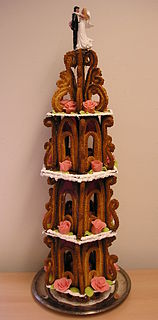
Confectionery is the art of making confections, which are food items that are rich in sugar and carbohydrates. Exact definitions are difficult. In general, however, confectionery is divided into two broad and somewhat overlapping categories: bakers' confections and sugar confections. The occupation of confectioner encompasses the categories of cooking performed by both the French patissier and the confiseur.
White Knight is a brand of chocolate-coated, chewy, mint-flavoured confectionery bar sold in Australia. Originally produced by Hoadley's Chocolates it was later manufactured by Nestlé Australia. The packaging is blue and white and features a picture of a knight on a horse. Its slogan is 'Mighty Mint Chew'.

Liquorice allsorts are assorted liquorice confectionery sold as a mixture. Made of liquorice, sugar, coconut, aniseed jelly, fruit flavourings, and gelatine, they were first produced in Sheffield, England, by Geo. Bassett & Co Ltd.

Wadsley Bridge is a suburb of Sheffield, South Yorkshire, England, 3 miles (4.8 km) northwest of the city centre. The area is a mixture of residential housing and small industrial and commercial premises. The suburb falls within the Hillsborough ward of the City.

Owlerton is a suburb of the city of Sheffield, it lies 2.2 miles (3.5 km) northwest of the city centre near the confluence of the River Don and River Loxley. Owlerton was formerly a small rural village with its origins in the Early Middle Ages; it became part of Sheffield in the early 1900s as the city expanded. Owlerton stands just east of the adjacent suburb of Hillsborough and the division between the two districts is difficult to delineate. The suburb falls within the Hillsborough ward of the city. This is further complicated by the fact that certain buildings such as Hillsborough Stadium, Hillsborough Leisure Centre and Hillsborough College lie firmly within Owlerton. The name Owlerton is believed to come from the abundant growth of alder trees in the area
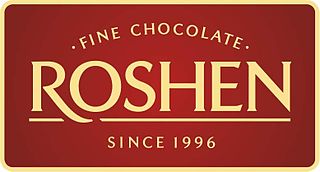
Roshen Confectionery Corporation is a Ukrainian confectionery manufacturing group. It operates facilities in the Ukrainian cities of Kyiv, Ivankiv and Kremenchuk, as well as in Budapest, Hungary and Klaipėda, Lithuania. The name of the company was derived from the last name of its owner Petro Poroshenko - Poroshenko, who also was the president of Ukraine between 2014-2019.
Parma Violets are a British violet-flavoured tablet confectionery manufactured by the Derbyshire company Swizzels Matlow, named after the Parma violet variety of the flower. The sweets are hard, biconcave disc-shaped sweets, similar to the Fizzers product from the same company but without their fizziness. Swizzels Matlow have also released a line of Giant Parma Violets.

Rowntree's is a British confectionery business based in York, England. Rowntree developed the Kit Kat, Aero, Fruit Pastilles, Smarties brands, and the Rolo and Quality Street brands when it merged with Mackintosh's in 1969 to form Rowntree Mackintosh Confectionery. Rowntree's also launched After Eight thin mint chocolates in 1962. The Yorkie and Lion bars were introduced in 1976.
George Bassett & Co., known simply as Bassett's, was a British confectionery company and is now used as a brand of Cadbury, owned by Mondelēz International. The company was founded in Sheffield by George Bassett in 1842. Perhaps the company's best-known sweets, the Liquorice Allsorts, were created by accident in 1899 and in 1926 the mascot of Bassett's, Bertie Bassett, was created; Bertie continues to represent the brand today. In 2016, the brand was joined with Maynards to create Maynards Bassetts.
Rot Front Open Joint-Stock Company is one of the oldest Russian confectionery manufacturers and a member of United Confectioners holding company. Rot Front produces over 200 types of confectionery and sells in all Russian regions, CIS countries, Western Europe, North America and the Middle East.

Kendal Mint Cake is a sugar-based confection flavoured with peppermint. It originates from Kendal in Cumbria, England. Kendal Mint Cake is popular among climbers and mountaineers, especially those from the United Kingdom, as a source of energy.
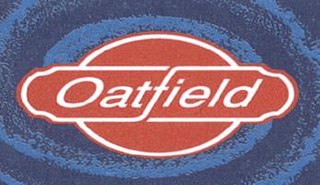
Oatfield was a chocolate and confectionery manufacturer located in Letterkenny, County Donegal, Ireland. The company was the oldest confectionery manufacturer in Ireland.

Midget Gems are chewy, firm sweets similar to wine gums but much harder. They are manufactured from sugar and glucose syrup, corn starch and/or various other starches, animal gelatin, and various colourings and flavouring.

Hillsborough is a suburb in north-west Sheffield, South Yorkshire, England. The centre of the district is popularly thought to be 'Hillsborough Corner' where Langsett Road, Middlewood Road, Holme Lane and Bradfield Road all meet. The Hillsborough ward population at the 2011 Census was 18,605.

Hillsborough House, later called Hillsborough Hall, is a large, stone-built mansion constructed in the Adam style in the latter part of the 18th century. It stands 2½ miles north-west of the centre of Sheffield at grid reference SK331901 in the suburb of Hillsborough within Hillsborough Park, a council-owned public recreational area. For 124 years the house was a private dwelling, but since 1906 it has housed the Hillsborough branch library. It is a Grade II listed building as are the coach house and stables which stand 22 yards (20 m) north west of the main house.

Gummies, gummi candies, gummy candies, or jelly sweets are a broad category of gelatin-based chewable sweets. Gummi bears, Sour Patch Kids, and Jelly Babies are widely popular and are a well-known part of the sweets industry. Gummies are available in a wide variety of shapes, most commonly seen as colorful depictions of living things such as bears, babies, or worms. Various brands such as Bassett's, Haribo, Betty Crocker, Disney and Kellogg's manufacture various forms of gummy snacks, often targeted at young children. The name "gummi" originated in Germany, with the term "jelly sweets" more common in British English.
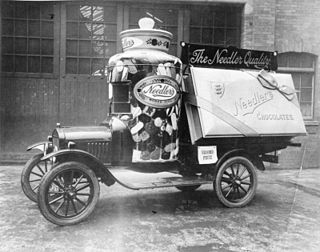
Needler's was a sweet manufacturer based in Kingston upon Hull, England. The company was founded in the 19th century and sold to Hillsdown Holdings in 1986.

Cornish Place is a listed building situated in the Neepsend area of the City of Sheffield. The building was formerly the factory of James Dixon & Sons, a Britannia metal, Sheffield plate and Cutlery manufacturer. In the late 1990s the disused building was cleaned and converted into apartments, it is regarded as the most impressive cutlery works that still stands in Sheffield and rivals the cotton mills of Lancashire and the West Riding in terms of architectural quality and heritage. The most impressive parts of the building are the east and west ranges which have Grade II* listed status while the rest of the works have the lower Grade II rating. The "Cornish" in the buildings name is thought to derive from the manufacture of Britannia metal which is made up of 93% tin which came from Cornwall.

Taylor's Eye Witness Works is an industrial building on Milton Street in the Devonshire Quarter area of Sheffield city centre, South Yorkshire, England. The works are a Grade II listed building which since their foundation in 1852 have always specialised in producing kitchen and pocket knives along with various associated products. The building is believed to be the only traditional works in Sheffield which still manufactures its original products. It stands next to the Beehive Works another listed cutlery works on Milton Street.
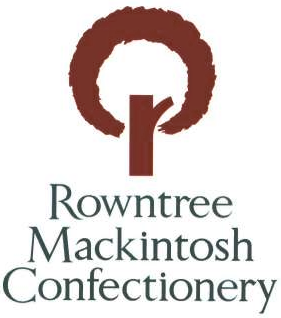
Rowntree Mackintosh Confectionery was a British confectionery company formed by the merger of Rowntree's and John Mackintosh Co.. The company was famous for making well-known brands of chocolate, including Kit Kat, Aero and Quality Street. The company was purchased by Nestlé in 1988, which rebranded many products under its own brand.